As climate change starts to affect what we can grow in our gardens, looking to the plants that outlasted the dinosaurs is always a good option. Growing is a simple way to protect your garden from warming climates, and adds a delicate focal point.
In this article, we’re going to look at how to grow pittosporum and its wide range of advantages in the garden. Plus, we’ve pulled together some of the best varieties with a few tips on how to grow each one.
More...
Genus: | Pittosporum |
|---|---|
Family: | Pittosporaceae |
Common Names: | Pittosporum, Cheesewood, Japanese Mock Orange |
Location: | Outdoor |
Type: | Evergreen shrub |
Growth: | 2-30m tall (large species variation) |
Sun requirements: | Full sun - partial shade |
Foliage Colour: | Green, white, red, variegated (depending on species) |
Flower Colour: | White |
Flowering: | Spring |
Fruit: | None |
Maintenance level: | Low |
Poisonous for pets: | Non-toxic to cats and dogs |
What is Pittosporum?
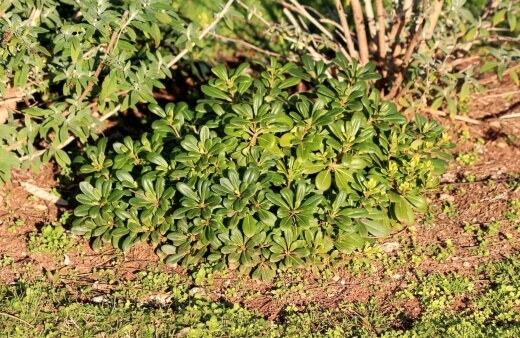
Pittosporum is a varied genus of flowering evergreen shrubs, including low-growing varieties and trees that can reach up to 30m tall.
The most common varieties in our gardens, like P. tenuifolium, typically grow to around 2m tall at maturity but can be easily topiaries for neat hedging or flamboyant displays.
While most variety have thick waxy leaves, the most attractive are the variegated types, with light, feathery foliage that rustles beautifully in the wind.
Cheesewood’s Natural Habitat
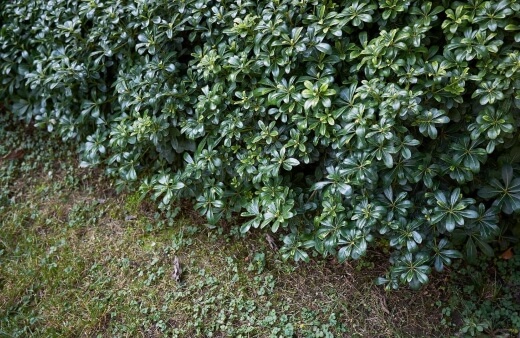
Pittosporum are ancient plants, long predates recorded history. Fossil records estimate that they first evolved on the supercontinent of Gondwana over 500 million years ago. Their hardiness and high tolerance to an array of conditions are evidence of their ability to withstand extreme global changes.
This plant, like all prehistoric plants, are good options for a world dealing with climate change as they can be used reliably as hedges with little risk of weather conditions damaging them.
Best Pittosporum Varieties to Grow
1. Pittosporum tenuifolium ‘Variegatum’P. tenuifolium ‘Variegatum’ is the most common pittosporum in Australia, grown by pretty much every nursery, and sold in nearly all garden centres. P. tenuifolium ‘Variegatum’ grows best in dappled sun, in a warm location and can cope well with wind. Water this matt leaves pittosporum in well when first planted. | 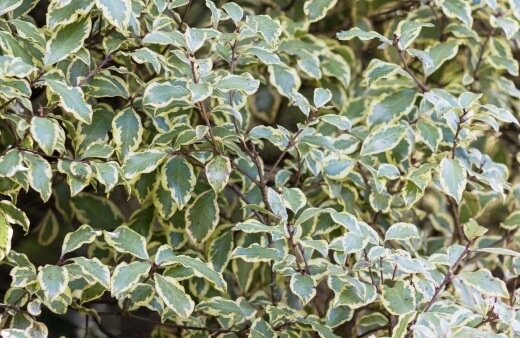 |
2. Pittosporum tenuifolium ‘Tom Thumb’The waxy red leaves of P. tenuifolium ‘Tom Thumb’ are perfect for outdoor spaces and look incredible in pots, pruned into neat domes. Their fresh flush of lime green foliage in spring distracts from the subtle white flowers which are easily missed, but it’s all about autumn colour with its deep red foliage. | 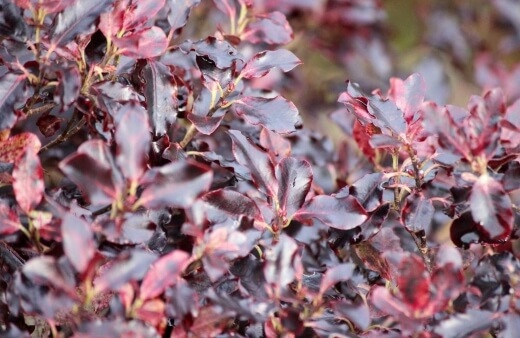 |
3. Pittosporum tenuifolium ‘Irene Paterson’P. tenuifolium ‘Irene Paterson’ couldn’t be further from P. tenuifolium ‘Tom Thumb’, with speckled white patterns across matt, grassy foliage. For a variety that’s easy to train, P. tenuifolium ‘Irene Paterson’ is a great place to start, growing up to 60cm in a single season, and easily reaching 2m after 3-4 years for almost instant structure. | 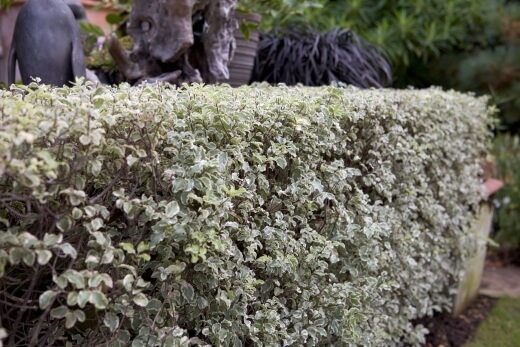 Source: gardenersworld.com |
4. Pittosporum tenuifolium ‘Elizabeth’For an easy to care-for native hedge with a twist, try P. tenuifolium ‘Elizabeth’. The red-rimmed leaves are gorgeous when grown along a boundary, and go from green and white to green and red in autumn. Water and feed this variety weekly for the first year as they can grow leggy if they have to search for nutrients. |  Source: gardenia.net |
5. Pittosporum tenuifolium ‘Gold Star’P. tenuifolium ‘Gold Star’ have glossy foliage, and unusual deep purple flowers, making them particularly sought after by collectors. The bright yellow streaks through each leaf are perfect for brightening up slightly shady corners of the garden, and they cope reasonably well with drought too. You can’t really go wrong with P. tenuifolium ‘Gold Star’. |  Source: gardenersworld.com |
6. Pittosporum tenuifolium ‘Bannow Bay’P. tenuifolium ‘Bannow Bay’ is a gorgeous dwarf variety, growing just under 2m at its very tallest if left to grow into a standard tree. The best use for P. tenuifolium ‘Bannow Bay’ in the garden though is as low-growing edging plants, grown along the edges of paths to create flowing borders. Because they are relatively drought tolerant too, they are happy in competition with other taller shrubs. | 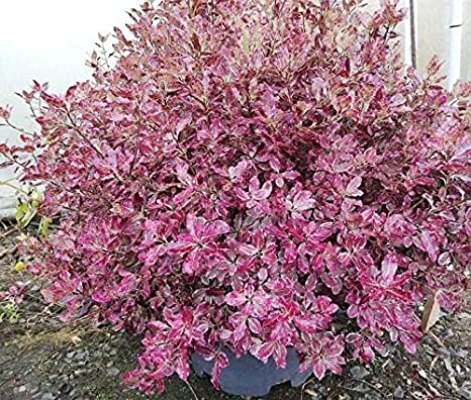 Source: amazon.co.uk |
7. Pittosporum tenuifolium ‘Cratus’For a more unusual variety, it's worth considering P. tenuifolium ‘Cratus’, with a dwarfed habit, and smaller leaves than others in this genus. The long black stems pop out from behind the tiny leaves, providing interest and a structural depth that is uncommon in pittosporum. |  Source: worldgardenplants.com |
8. Pittosporum tobira ‘Nanum’(Japanese Mock Orange)Also called Nana, you’d be forgiven for mistaking this pittosporum for a succulent or an overgrown Jade, but it is commonly called the Japanese Mock Orange, with gorgeous fragrant flowers in summer which are even better when planted in direct sun. P. tobira varieties require more moisture than tenuifolium types and rapidly lose vigour with drooping leaves in periods of drought. |  Source: thetutuguru.com.au |
9. Pittosporum tobira ‘Mojo’P. tobira ‘Mojo’ is another Japanese native, with simple white flowers filled with sweet citrus fragrance. The gently variegated edges to the leaves of P. tobira ‘Mojo’ make it visually more interesting than other tobira cultivars, but just as simple to grow. |  Source: kiefernursery.com |
1. Pittosporum tenuifolium ‘Variegatum’

P. tenuifolium ‘Variegatum’ is the most common pittosporum in Australia, grown by pretty much every nursery, and sold in nearly all garden centres.
P. tenuifolium ‘Variegatum’ grows best in dappled sun, in a warm location and can cope well with wind. Water this matt leaves pittosporum in well when first planted.
2. Pittosporum tenuifolium ‘Tom Thumb’

The waxy red leaves of P. tenuifolium ‘Tom Thumb’ are perfect for outdoor spaces and look incredible in pots, pruned into neat domes. Their fresh flush of lime green foliage in spring distracts from the subtle white flowers which are easily missed, but it’s all about autumn colour with its deep red foliage.
3. Pittosporum tenuifolium ‘Irene Paterson’

Source: gardenersworld.com
P. tenuifolium ‘Irene Paterson’ couldn’t be further from P. tenuifolium ‘Tom Thumb’, with speckled white patterns across matt, grassy foliage. For a Pittosporum that’s easy to train, P. tenuifolium ‘Irene Paterson’ is a great place to start, growing up to 60cm in a single season, and easily reaching 2m after 3-4 years for almost instant structure.
4. Pittosporum tenuifolium ‘Elizabeth’

Source: gardenia.net
For an easy to care-for native hedge with a twist, try P. tenuifolium ‘Elizabeth’. The red-rimmed leaves are gorgeous when grown along a boundary, and go from green and white to green and red in autumn.


Get Your Free Guide:
Master Growing Australian Natives eBook
A Must Have Complete Guide for Every Australian Garden
Get Your Free Guide:
Master Growing Australian Natives eBook
A Must Have Complete Guide for Every Australian Garden
Water and feed this variety weekly for the first year as they can grow leggy if they have to search for nutrients.
5. Pittosporum tenuifolium ‘Gold Star’

Source: gardenersworld.com
P. tenuifolium ‘Gold Star’ have glossy foliage, and unusual deep purple flowers, making them particularly sought after by collectors. The bright yellow streaks through each leaf are perfect for brightening up slightly shady corners of the garden, and they cope reasonably well with drought too. You can’t really go wrong with P. tenuifolium ‘Gold Star’.
6. Pittosporum tenuifolium ‘Bannow Bay’

Source: amazon.co.uk
P. tenuifolium ‘Bannow Bay’ is a gorgeous dwarf pittosporum, growing just under 2m at its very tallest if left to grow into a standard tree. The best use for P. tenuifolium ‘Bannow Bay’ in the garden though is as low-growing edging plants, grown along the edges of paths to create flowing borders.
Because they are relatively drought tolerant too, they are happy in competition with other taller shrubs.
7. Pittosporum tenuifolium ‘Cratus’

Source: worldgardenplants.com
For a more unusual pittosporum, it's worth considering P. tenuifolium ‘Cratus’, with a dwarfed habit, and smaller leaves than others in this genus.
The long black stems pop out from behind the tiny leaves, providing interest and a structural depth that is uncommon in pittosporum.
8. Pittosporum tobira ‘Nanum’ (Japanese Mock Orange)

Source: thetutuguru.com.au
Also called Nana, you’d be forgiven for mistaking this pittosporum for a succulent or an overgrown Jade, but it is commonly called the Japanese Mock Orange, with gorgeous fragrant flowers in summer which are even better when planted in direct sun.
P. tobira varieties require more moisture than tenuifolium types and rapidly lose vigour with drooping leaves in periods of drought.
9. Pittosporum tobira ‘Mojo’

Source: kiefernursery.com
P. tobira ‘Mojo’ is another Japanese native, with simple white flowers filled with sweet citrus fragrance. The gently variegated edges to the leaves of P. tobira ‘Mojo’ make it visually more interesting than other tobira cultivars, but just as simple to grow.
How to Grow Pittosporum
This plant can survive almost all conditions other than full shade and cope well with frost, drought and waterlogging. However, there are some general rules to keeping a happy pittosporum, rather than one which is simply surviving.
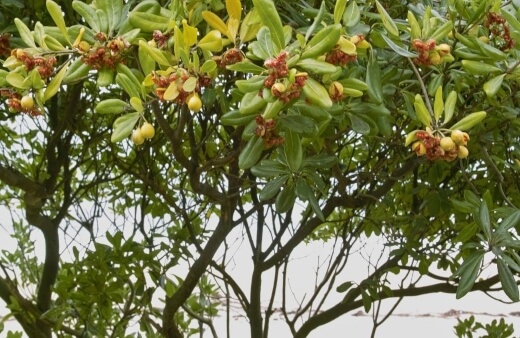
Sunlight Needs
Pittosporum should be planted in full sun, or partial shade, allowing it to grow without developing leggy shoots that make it difficult to prune. Pittosporum grown in shade will grow leggy in search of light and usually last less than 2-3 years.
Providing dappled afternoon light, in a position that gets full sun in either the morning or evening is ideal for this plant. Situate a bird bath nearby to complete this picturesque tree.
Best Soil for Pittosporum
The best soil for this plant is a slightly sandy, free-draining soil with average nutritional content and some water retention. Avoid planting pittosporum in clay soils, or soil with no water retention at all.
Running a water retention test on your garden soil is useful for flowering shrubs like pittosporum:
Water retention test:
- Dig a square hole, 1ft wide and 2ft deep and fill it with water.
- Allow that water to drain fully so the soil around is saturated.
- Fill again with water, then wait for results.
Results:
- If the water has drained fully in under an hour, you have very fast-draining soil which needs compost or manure adding.
- Water should drain at around one inch per hour for well-drained soil.
- If any, or all, water remains after 12 hours you have poorly drained soil or boggy soil.
This plant is best grown with well-drained soil.
Moisture
When you first plant pittosporum, it needs regular water to establish. For the first spring and summer after planting, water once a week with half a bucket. In the second year, no watering is needed other than through prolonged droughts.
Propagating Pittosporum
There are two ways to propagate pittosporum, either from greenwood cuttings or from fresh seed. Below, we’ll cover each in detail:
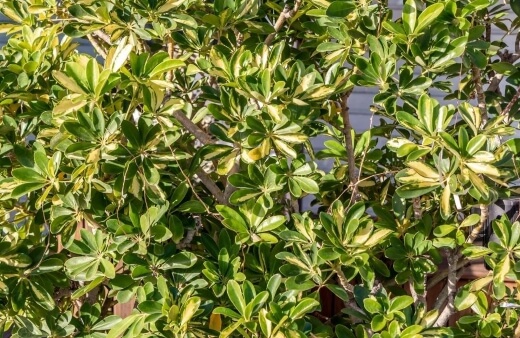
Planting Pittosporum Seeds
Pittosporum seeds are hard to come in garden centres, and even online, but if you can get your hands on fresh seeds it’s a great way to grow loads of new plants for free.
Harvest fresh seeds once the flowers have dried and the seed pods have begun to split open. The black or red berries can be sown individually or scattered and germinate well in Australian summers outdoors.
Simply harvest the seed, and scatter it over the surface of the compost. Water them well, and then protect them from birds with netting or a propagator lid. Germination takes around 30 days in summer, so keep checking, and keep the soil moist but not damp.
Propagating Cheesewood from Cuttings
Cuttings are the simplest method of propagating new plants. Pittosporum cuttings take easily and can be taken from the plant any time between late spring and mid-summer.
Tools:
- Secateurs - see our review of the best secateurs here.
- Small plastic pot
- Seed and cutting compost (or compost & perlite)
- Clear plastic bags (freezer bags or sandwich bags are perfect)
Method:
- Fill a small plastic pot with seed and cutting compost.
- Dib three holes around the edge of the pot.
- Cut three 10-15cm shoots from the plant, with true leaves and no sign of flowers or buds.
- Cut just below a node.
- Remove all but the top leaves.
- Dip the base in rooting hormone.
- Gently push the cuttings into the holes in the compost.
- Water well.
- Cover with a plastic bag.
- Leave somewhere warm, with 6-8 hours of sunlight per day.
- New leaves should appear in 2-3 weeks.
How to Care for Pittosporum
Once this plant has established in your garden, there is very little regular care required. These hardy shrubs tend to look after themselves, but to improve their health and reinvigorate tired-looking plants, follow the steps below on mulching and pruning this plant.
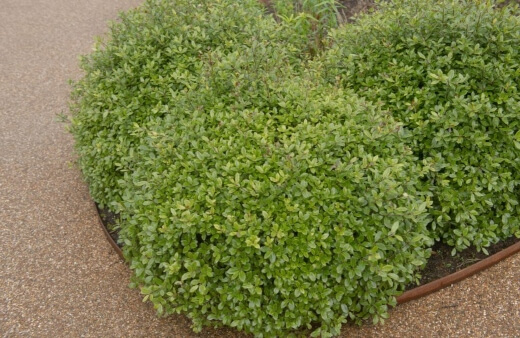
Mulching Cheesewood
Pittosporum doesn’t need mulching every year, and mulching too often can actually cause root rot by forcing water to stand in the soil in warm weather instead of evaporating. Instead, mulch just once every three years.
Mulching generously once every three years helps to revive spent nutrients in the soil, and worms and insects will work the compost into the earth, helping to aerate the root system of older pittosporums.
Pruning Pittosporum
This plant is an ideal alternative to box hedging or yew hedging, as it can be pruned hard and grows well from old wood. We recently replaced all of our box hedges with pittosporum as they have suffered really badly with rising summer temperatures.
The treatment of each is nearly identical, but pittosporum is much faster growing. Prune pittosporum two or three times per year with hedge shears to maintain its shape, or allow it to grow out and form an informal shrub. See our compilation of the best hedge shears available online.
Common Pittosporum Pests and Diseases
This plant rarely suffer from any pests or diseases, but poor growing conditions can encourage a few particular problems:
- Spider mites
- Shield bugs
- Thrips
- Root rot
Spider mites
Spider mites are minute red arachnids that look and act like spiders, but eat plants rather than insects. They feed on the chlorophylls of plants living in dry conditions. If your pittosporum is sat in dry soil and left unwatered through periods of drought, spider mites are very likely.
Simply wash them off with a hose, as they don’t post any significant threat to pittosporum.
Shield bugs
Green shield bugs are particularly frustrating pittosporum pests, eating huge amounts of foliage when they strike. If you sport shield bugs, try to move them to another part of the garden.
The bonus here is that shield bugs tend to prefer almost any other plant, so rarely settle on pittosporum for long.
Thrips (Myoporum thrips)
Most thrips prefer annual plants, but Myoporum thrips will infest the new shoots of Pittosporum in spring. Plant native wildflowers in other parts of the garden to attract wasps and carnivorous thrips, which will predate them and keep them under control.
If you prefer to use organic pesticides, castile soap and neem oil are both particularly effective on thrips.
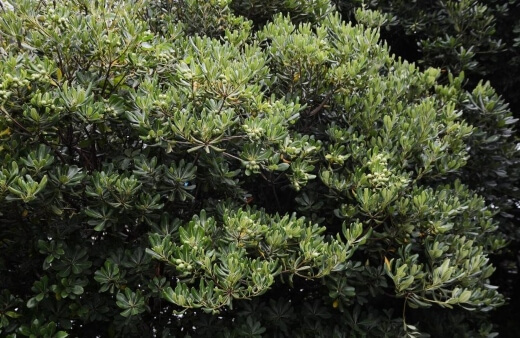
Root rot
Root rot is the only common disease suffered by pittosporum. To avoid root rot, try not to overwater your plants, and never water when the soil is already wet. Some nematodes can affect this plant, but it is rare.
If you notice significantly wilted foliage and soggy or squishy stems near the base of your plant, dig it up and check the roots for signs of damage or disease.
Adding lime to the soil can help reduce nematodes, but the most effective way is by adding beneficial nematodes which attack and discourage the destructive types.
Pittosporum Frequently Asked Questions

How fast does pittosporum grow?
Pittosporum grows at a rate of 30-40cm per year in its first few years and slows down after five years in the ground. This makes this plant an ideal hedging plant, as it can grow from young plants into a full hedge in as little as four years.
Will pittosporum grow in shade?
Pittosporum can tolerate shade but is more likely to suffer from overwatering or root rot in low light conditions. They like full sun where possible, which also helps to regulate their growth, creating a more even shrub.
Can pittosporum be cut back hard?
Pittosporum can be cut right back into dead growth and will regenerate, but to reduce stress on the plant, try to limit pruning to no more than one-third of the plant’s overall size.
Which pittosporum is best for screening?
Pittosporum tenuifolium is perfect for creating a tall hedge fast. While this variety is a tree if left to grow, they can be trained into hedges and can be bought as semi-mature or young plants relatively cheaply.
Looking to grow more pittosporum varieties in your home? Be sure to check our in depth pittosporum angustifolium growing guide here.
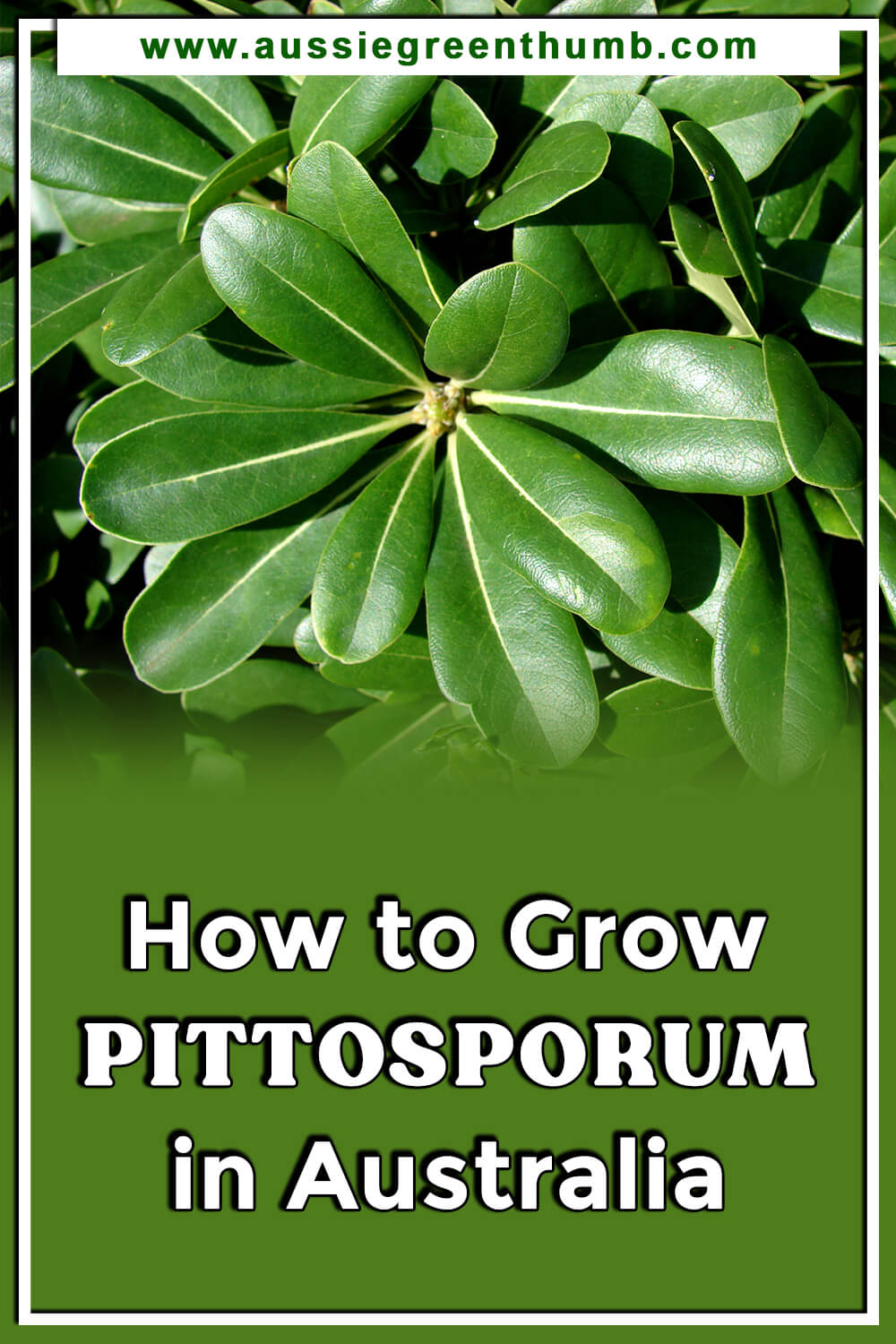
Wrapping Up Our Pittosporum Growing and Care Guide
I love the bristling sound when this plant flutters in the wind, delicately displaying the pale undersides of its humble leaves. Any garden would benefit from this gorgeous shrub, not just visually, but as a low-maintenance plant that gives far more to you than you give to it.
Caring for this plant is simple, and now you know how to grow pittosporum in your own garden, I can’t imagine a reason not to.
Published on July 3, 2022 by Lorri Hopkins
Last Updated on February 21, 2025




